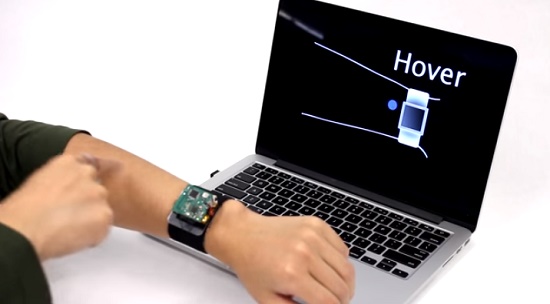Smartwatches may serve a lot of purposes like keeping track of your fitness and health, notifiying you about mails and social media updates, measure your heart rate and so many stuffs. But the small screen size imposes greater restrictions on accessing the available features. Even though you have the provisions to check mail, but swiping your fingers through such a tiny screen needs a lot of patience. You always need a bigger screen to use it as touch screen but a smartwatch screen has to have a limit otherwise it may lead to a fashion faux pass. Have you ever though of using your hand as the touch screen of your smartwatch? Not really! With SkinTrack it will be made possible.

SkinTrack is a research project of Future Interfaces Group, a research lab within Carnegie Mellon University, who has taken a serious take on resolving the problem. “The great thing about SkinTrack is that it’s not obtrusive; watches and rings are items that people already wear every day,” said Yang Zhang, a first-year Ph.D. student at CMU who has worked on the technology. The technology includes two things- one is your smartwatch with a sensing band and the other one is a signal emitting ring that uses your hand as as electrical waveguide for continuous tracking and then lets you use your hand as the touch screen. The electrical waveguide concept helps SkinTrack in using your hand even when it’s covered with clothing.
The signal emitting ring along with the sensing band creates a setup that will be able to track the points on your hand that you are touching with your finger. The smartwatch contains two electrodes. When the finger with the signal emitting ring touches the skin, the signal emitting ring sends high frequency signal all over. The distance between the point of touch on your skin and each of the two electrodes are different. This difference in distance is then fed to a phase comparator. As the position changes, the phase also changes and a one dimensional position is determined. Similarly another pair of electrodes will give another coordinate. Thus a two dimensional coordinate system will be developed which will then determine the postion of the skin tapping.
Check out the video to get an understanding in depth. You can swipe, track play games and perform every moves on your screen that you did with your smartphones screen.








Leave a Reply